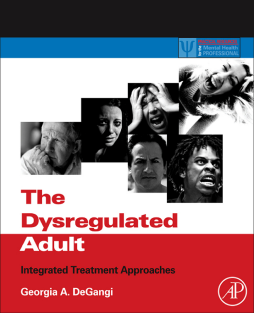
Additional Information
Book Details
Abstract
People experiencing disorders in regulation are highly sensitive to stimulation from the environment, emotionally reactive, and have difficulty maintaining an organized and calm life style. They are impulsive, easily frustrated, and as a result make decisions that lead to an overwrought state-or who conversely retreat entirely from the world. This disorder is most likely to accompany diagnoses of bipolar or mood disorder, anxiety, depression, obsessive-compulsive disorder, Asperger’s syndrome, eating or sleep disorders, and/or attention deficit disorder. This book instructs therapists how best to treat the dysregulated adult, providing diagnostic checklists, and a chapter by chapter inventory in approaching treatment of dysregulation in a variety of life skills.
- Informs the therapist how dysregulation relates to multiple disorders
- Includes clinical observations and case studies
- Gives the therapist tools and techniques for the client to understand his behavior, reframe problems in a positive way, and take responsibility for behavior change
- Encompasses sensory integration therapy and mind-body techniques for the therapist to guide the client toward self-calming
- Emphasis on effective relational dynamics between the client and significant persons in his or her life
- Separate chapters on how to treat dysregulation effects on multiple behaviors, including mood regulation, behavioral control, inattention, sleep, feeding, and social interactions
"This book is designed for use by mental health professionals and occupational therapists who work with adults who are highly emotionally reactive, impulsive, irritable, and sensation-seeking. An opening chapter reviews how problems of self-regulation can affect work and relationships. Later chapters are devoted to mood and anxiety disorders, eating and sleep disorders, obsessive-compulsive disorder, ADD and ADHD, and developmental dyspraxia. Each of these chapters gives background on developmental and neurobiological underpinnings of the problem, presents diagnostic checklists, and discusses treatment approaches from dialectical behavior, mind-body, interpersonal, and sensory integration therapies. The book’s 20 brief appendices offer ideas, activities, visualizations, meditations, and affirmations for various conditions, written for clients."--Reference and Research Book News, August 2012
